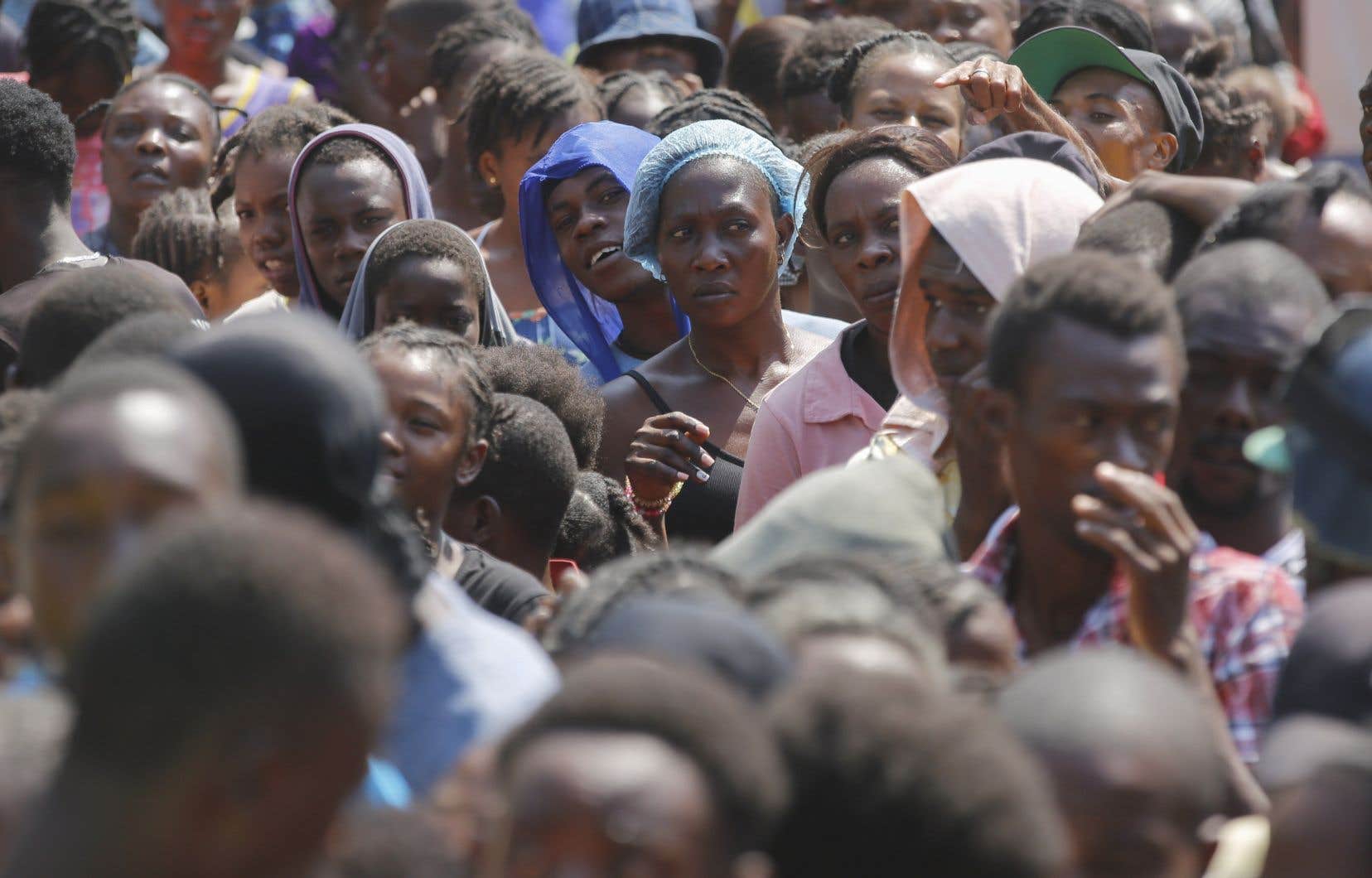A crowd of around 100 people tried to break through a metal gate in the Haitian capital of Port-au-Prince as a guard armed with a baton pushed them back, threatening to beat them. Undeterred, children and adults, some carrying babies, kept nudging each other to try to gain entry.
“Let us in!” We are hungry ! “, they shouted in the afternoon.
They were trying to find makeshift shelter in an abandoned school. Inside, workers distributed soup and rice to Haitians who lost their homes to gang violence.
Some 1.4 million Haitians are on the brink of famine, and more than 4 million of them are in need of food aid, sometimes eating only once a day or not at all, according to humanitarian groups. .
“Haiti is facing a prolonged and massive famine,” Jean-Martin Bauer, director of the United Nations World Food Program for Haiti, told the Associated Press. He noted that Croix-des-Bouquets, a district of the Haitian capital, “has malnutrition rates comparable to those of any war zone in the world.”
Authorities are trying to quickly get food, water and medical supplies to makeshift shelters and other locations as gang violence rages in Port-au-Prince.
Only a few humanitarian organizations have been able to restart since February 29, when gangs began attacking key institutions, burning police stations, forcing the closure of the main international airport and storming two prisons, freeing more than 4,000 detainees.
The violence forced Prime Minister Ariel Henry to resign once a transitional council was created, but gangs continued their attacks in several communities.
Mr. Bauer and other officials said the gangs were blocking distribution routes and paralyzing the main port. The World Food Program warehouse is running out of grains, beans and vegetable oil as it continued to deliver meals.
“We have supplies for weeks. I say weeks, not months, warned Mr. Bauer. This terrifies me. »
Inside the school, which serves as a makeshift shelter, the scene was a little calmer. Dozens of people were lined up to get food. More than 3,700 shelter residents compete for a place to sleep and share a hole in the ground as a toilet.
More than 200 gangs are estimated to operate in Haiti, with nearly twenty concentrated in and around Port-au-Prince. They now control 80% of the capital and are seeking more territory.
Many people died in the most recent attacks and more than 15,000 people were left homeless.
Food for the Hungry runs a cash program that helps some 25,000 families a year by sending them money, but Boby Sander, the organization’s director, said the ongoing looting and bank attacks have paralyzed the system. “Since February 29, we have not been able to do anything at all,” he lamented.
On a recent morning, the smell of cooking rice drew a group of adults and teenagers to a sidewalk near a building where aid workers were preparing meals to distribute to shelters elsewhere in the city.
“Can you help me get a plate of food?” We haven’t eaten anything yet today,” they asked people entering and leaving the building. But their requests went unanswered. The food was intended for the school shelter.
“We know it’s not a lot,” said Jean Emmanuel Joseph, who oversees food distribution for the Center for Peasant Organization and Community Action. “It’s a shame we can’t give them more.” »
At the shelter, some adults and children tried to wait in line for a second helping. “You already had a plate,” they were told. Let others have one. »
The U.S. Agency for International Development said about 5.5 million people in Haiti, nearly half the population, need humanitarian aid and pledged $25 million in addition to the $33 million announced earlier this week.
